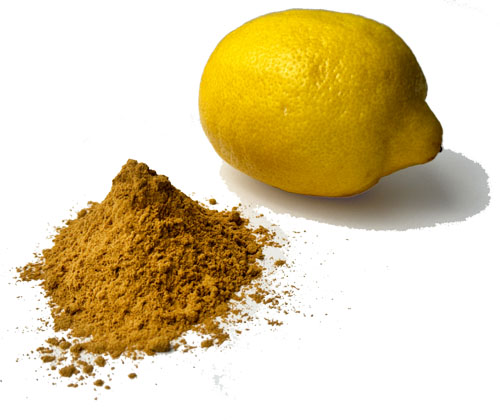Heart disease continues to be the leading cause of death both in the US and globally. The World Health Organization reported that deaths caused by heart disease represented a shocking 31% of all global deaths in 2021.1
According to the American Heart Association, nearly half of all adults in the US have some form of cardiovascular disease.2
These alarming statistics have driven accelerated efforts to address the problem and find effective strategies regarding prevention and risk factor management. Rob Brewster, President of Ingredients by Nature, reports.
Comprehensive cardiovascular support from dietary supplements
In this context, a growing body of evidence supports the health benefits of polymethoxyflavones (PMFs); this is a subclass of citrus flavonoids with multiple methoxy groups (CH3) that block oxidative stress and modulate enzymes that control free radicals.
Nobiletin (NOB) and tangeretin (TAN) comprise 95% of the PMFs found in citrus fruits and have a high capacity to combat oxidative stress and improve systemic antioxidant function.
Studies indicate that daily supplementation with PMFs inhibits the early stages of local inflammation, reduces the overproduction of proinflammatory biomolecules (cytokines and nitric oxide), decreases systemic inflammation and maintains healthy blood cholesterol and triglyceride levels.
In a pioneering study, TAN was shown to decrease the hepatic synthesis of Apo B and triglycerides, which are considered to be the building blocks of LDL cholesterol.3

Another study demonstrated that NOB reduced key markers of cardiovascular health, including LDL-cholesterol, total cholesterol and triglycerides.4
In rats, NOB improved antioxidant capacity and reduced lipid peroxidation, whereas TAN increased retinol and α-tocopherol levels, thereby contributing to decreased lipid peroxidation in the blood.5
Tocotrienols and tocopherols, members of the vitamin E family, are predominantly found in palm and rice bran oil and play a complementary role in protecting the heart.
Inside the body, they can suppress the activity of HMG-CoA reductase, the enzyme responsible for cholesterol synthesis in the liver. Tocotrienols also have potent antioxidant properties, which can further improve heart health.
Its main strength arises from its ability to influence healthy levels of endogenous lipoproteins (LDL, VLDL and HDL) — particles synthesised in the liver and intestine, which transport cholesterol and triglycerides in the blood to other organs.
Furthermore, tocotrienols help to prevent lipid peroxidation and mitigate oxidative stress.6 An extensive review of the effects of palm oil tocotrienols and tocopherols concluded that there is sufficient evidence to support the high potential of these two groups of vitamin E as lipid-lowering agents, especially regarding total cholesterol and LDL-cholesterol.7
Clinical studies and results
A landmark study by Roza et al. sought to evaluate the effects of a combined supplement of citrus flavonoids and tocotrienols on cholesterol levels in hypercholesterolemic subjects.8
The participants included men and women aged 19–65 with cholesterol levels greater than 230 mg/dL. Subjects were randomised into groups receiving either a supplement (Sytrinol) containing 270 mg of PMFs and 30 mg of tocotrienols, or a placebo, taken daily for a period of 4 weeks.
The results were compelling. The combination of NOB, TAN and tocotrienols significantly reduced total cholesterol by 20% and LDL cholesterol by 22%, compared with the placebo group.
These reductions highlight the potential of this natural combination to support healthy cholesterol levels. Moreover, the supplement led to a 28% reduction in triglyceride levels, which is pivotal when it comes to managing lipid profiles.8

The findings suggest that a combination of citrus flavonoids and tocotrienols may effectively address heart health by reducing risk factors — namely by maintaining healthy cholesterol and triglyceride levels.
This natural combination offers a viable option for individuals seeking natural approaches to manage cholesterol levels. Importantly, the study reported no significant adverse effects, highlighting the safety and tolerability of this combination for long-term use in.
Supplement formulation and opportunity
Supplement manufacturers have a ripe opportunity to leverage these findings. Given the global prevalence of heart health challenges, people are looking for unique and effective interventions.
Consumer awareness about the benefits of citrus flavonoids and tocotrienols for cholesterol management and heart health is increasing. Developing supplements that include effective dosages of citrus flavonoids and tocotrienols, as used in the study, can help to ensure efficacy.
Available from Ingredients by Nature, Sytrinol delivers polymethoxylated flavones (PMFs) plus tocotrienols. Rigorous quality control measures are adhered to during the development of this ingredient to maintain the purity and potency of the active constituents … and to ensure its safety and effectiveness.
The road ahead
Although previous studies and the clinical trial done by Roza et al. provides a solid foundation, future research will aim to further elucidate the molecular mechanisms by which citrus flavonoids and tocotrienols support heart health.
Exploring the synergistic effects of combining these compounds with other natural substances known to support cardiovascular health, such as omega-3 fatty acids and plant sterols, may open additional avenues for innovation.
Exploring other promising benefits
Beyond their effects on cholesterol and triglyceride levels, citrus flavonoids and tocotrienols may also offer broader benefits for cardiovascular health. Emerging research suggests that these compounds may improve endothelial function, which is critical to maintain vascular wellness.
Endothelial cells line the interior surface of blood vessels and are essential to regulate blood pressure. Studies have shown that the antioxidant properties of citrus flavonoids may help to shield endothelial cells from oxidative damage, thereby promoting better blood flow.9

Similarly, tocotrienols have been found to enhance nitric oxide production, a key molecule involved in vascular dilation and blood pressure regulation.10 These combined effects suggest that citrus flavonoids and tocotrienols may play a vital role in comprehensive cardiovascular support.
Conclusion
The combination of citrus flavonoids and tocotrienols offers a promising natural approach to support heart health.
By leveraging these potent antioxidant capabilities, cholesterol-lowering properties and ability to support a healthy inflammatory response, individuals can maintain healthier cholesterol and triglyceride levels, which are critical markers of cardiovascular health.
Moreover, their ability to improve endothelial function and support vascular health underscores their potential as a comprehensive solution for cardiovascular health.
Developing science-backed products that incorporate effective dosages of these compounds can meet the growing demand for natural health interventions and more holistic risk mitigation.
The road ahead includes further research to confirm these benefits in larger, more diverse populations, and to explore the synergistic effects of combining these compounds with other heart-healthy substances such as omega-3 fatty acids and plant sterols.
As the body of evidence grows, so too will the opportunities to innovate and develop effective, natural solutions for heart health.
Ultimately, the integration of citrus flavonoids and tocotrienols into a heart health regimen represents a significant advancement in the quest to improve cardiovascular health.
Through continued research, education and product innovation, the industry can move the needle towards improved heart health and play a major role in efforts to reduce the global burden of cardiovascular disease.
References
- www.who.int/news-room/fact-sheets/detail/cardiovascular-diseases-(cvds).
- www.ahajournals.org/doi/full/10.1161/CIR.0000000000000950.
- E.M. Kurowska, et al., “Modulation of HepG2 Cell Net Apolipoprotein B Secretion by the Citrus Polymethoxyflavone, Tangeretin,” Lipids 39(2), 143–151 (2004).
- J.H. Yen, et al., “Citrus flavonoid 5-Demethylnobiletin Suppresses Scavenger Receptor Expression in THP-1 Cells and Alters Lipid Homeostasis in HepG2 Liver A Cells,” Mol. Nutr. Food Res. 55(5), 733–748 (2011).
- M. Rodrigues, et al., “Differential Effect of Nobiletin and Tangeretin on the Antioxidant Activity and Levels of α-Tocopherol and Retinol in Rats,” Food Sci. Engin. 2(2), 98–111 (2021).
- R. Ranasinghe, M. Mathai and A. Zulli, “Revisiting the Therapeutic Potential of Tocotrienol,” Biofactors 48(4), 813–856 (2022).
- S.B. Syarifah-Noratiqah, et al., “The Effects of Palm Oil on Plasma and Serum Lipid Parameters: A Systematic Review on Animal Intervention Studies,” Front. Vet. Sci. 7, 303 (2020).
- J.M. Roza, et al., “Effect of Citrus Flavonoids and Tocotrienols on Serum Cholesterol Levels in Hypercholesterolemic Subjects,” Altern. Ther. Health Med. 13(6), 44–48 (2007).
- A.M. Mahmoud, et al., “Beneficial Effects of Citrus Flavonoids on Cardiovascular and Metabolic Health,” Oxid. Med. Cell Longev. (2019): doi.org/10.1155/2019/5484138.
- A.A. Qureshi, et al., “Suppression of Nitric Oxide Production and Cardiovascular Risk Factors in Healthy Seniors and Hypercholesterolemic Subjects by a Combination of Polyphenols and Vitamins,” J. Clin. Exp Cardiolog. (2012): doi: 10.4172/2155-9880.S5-008.
